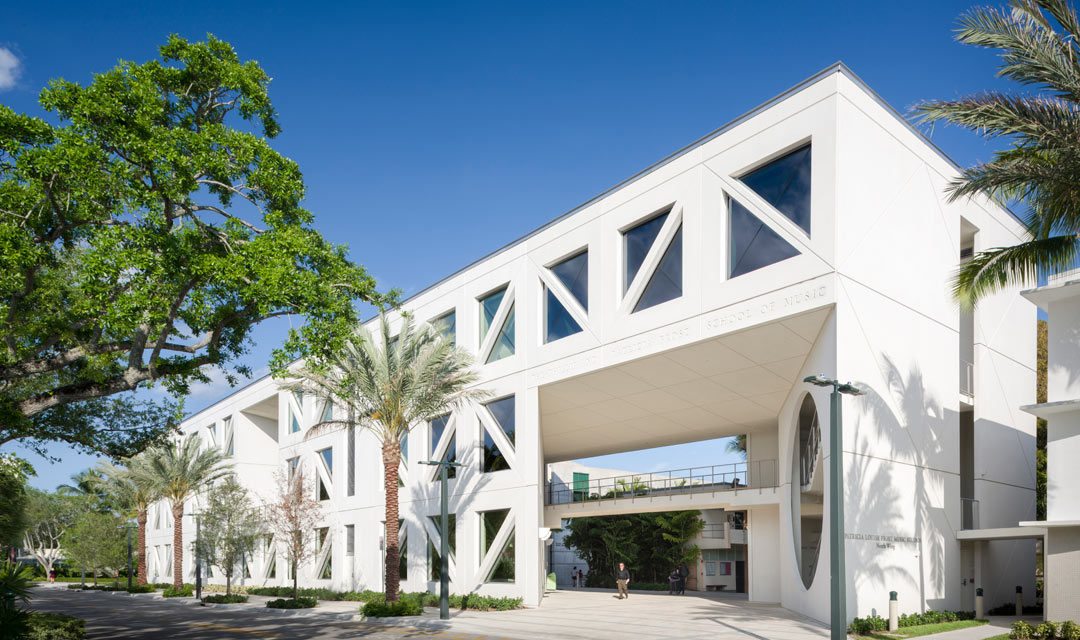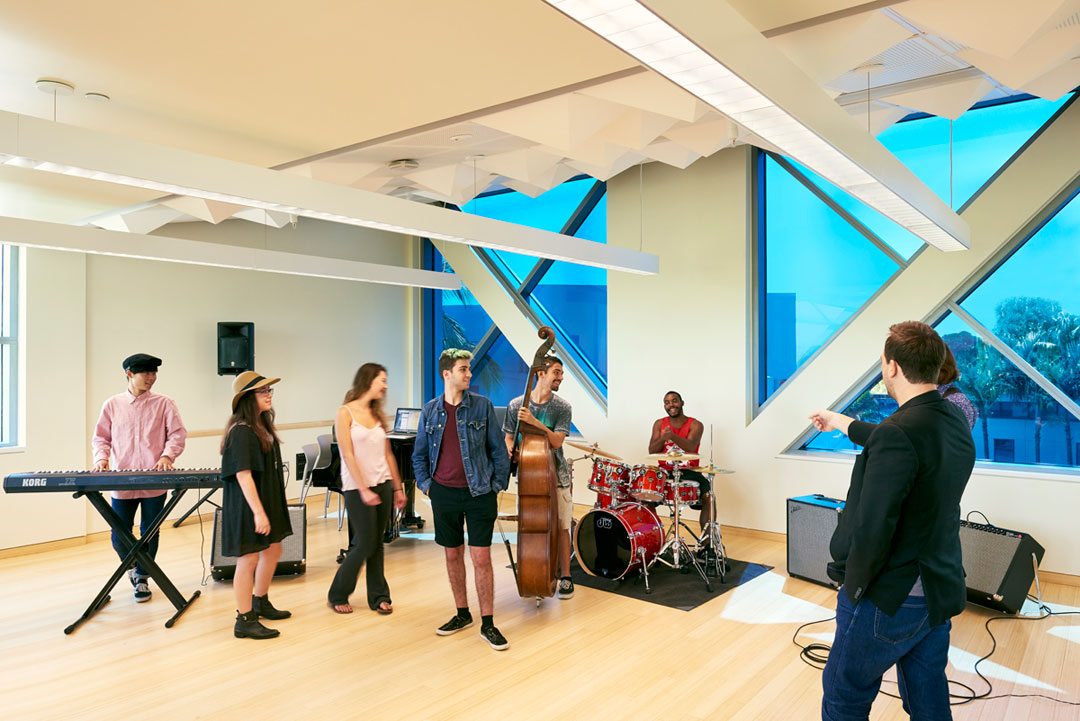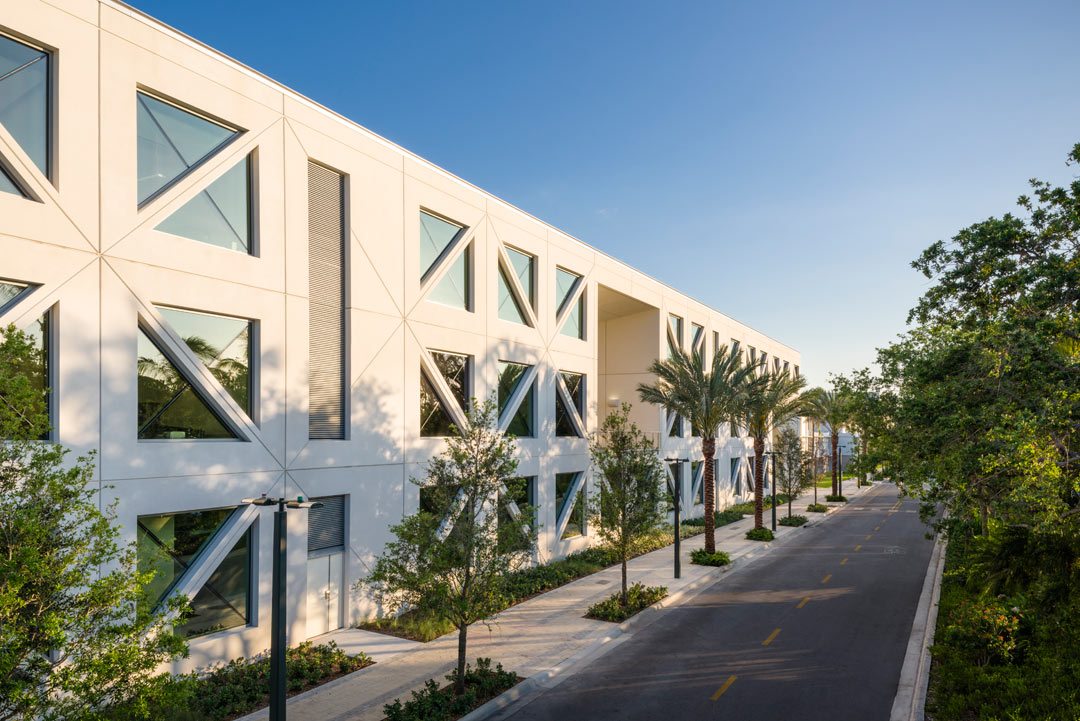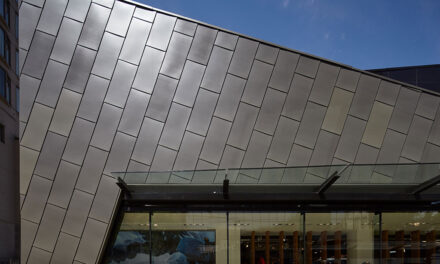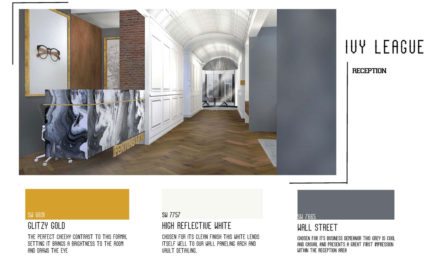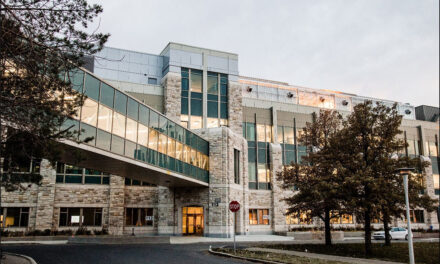Established in 1926, the University of Miami’s Frost School of Music is one of the world’s top 20 music schools. In 2003, a major donation by Dr. Phillip and Patricia Frost allowed the university to pursue plans to build a new state-of-the-art facility for instruction, performance and recording.
Project leaders sought to create a visually stunning and energy-efficient building with ample outdoor views of the lakeside campus and abundant natural light reaching classrooms and practice spaces. This presented a challenge in a south Florida climate defined by year-round warm weather and intense sunshine. Building designers had to find a way to control glare and solar heat gain inside while preserving light infiltration and building aesthetic appeal.
Solution
The university hired renowned architecture firm HOK to design the facility and develop a solution, led by famed architect Yann Weymouth. The team considered external louvers and other traditional options to control the sunlight, but none of these methods satisfied all project goals for performance, aesthetics and student comfort. Ultimately, the ideal solution was found in electrochromic window glazing.
Today, a new LEED® Platinum twin-building complex at the Frost School of Music is bustling with nearly 800 students and 125 faculty members. The facility offers more than 40,000 square feet of acoustically engineered teaching spaces. Rooms are also comfortable and daylight-optimized, due to electronically tintable SageGlass dynamic glass installed throughout.
SageGlass dynamic glass darkens or clears in response to sun intensity throughout the day, controlling glare and solar heat gain. SageGlass enhances the indoor environment by providing natural daylight and outdoor views. The dynamic glazing also supports the light-harvesting design of the indoor space, with each room configured as a “floating box” within a box. No two rooms share walls, floors or ceilings, providing the optimal acoustics for performing music.
Arrays of triangular SageGlass windows framed in white concrete walls make a bold architectural statement on the exterior. As the building industry’s only dynamic glass available in non-rectangular shapes, SageGlass was integral to bringing HOK’s distinctive window design to life.
Benefits
“The goal was to create a highly sustainable, state-of-the-art facility for teaching, learning, performing and recording music, as well as provide a beautiful gateway at the campus’ edge,” said HOK architect Alex Rodriguez. “To that end, the facility employs a light-harvesting, energy-efficient design that requires less than half the energy of comparable buildings.”
SageGlass is one of a number of eco-friendly design elements that helped HOK achieve LEED Platinum certification. The Frost School also features rooftop photovoltaics, rainwater harvesting cisterns, water-efficient landscaping and precast concrete walls that sequester smog from around the building.
“Sustainable design, natural lighting and outdoor views create better learning environments as well as enhance the creative process of music,” Rodriguez said. “With SageGlass, we were able to maintain outside views and keep people comfortable inside, while also minimizing energy consumption to achieve the project’s LEED goals.”
Project Details
LOCATION: Coral Gables, Florida
ARCHITECT: HOK
GLAZING CONTRACTOR: Harmon Inc.
PHOTOGRAPHY: Moris Moreno Photography
About SageGlass®
SageGlass® is the pioneer of the world’s smartest electrochromic glass and is transforming the indoor experience for people by connecting the built and natural environments. Electronically tintable SageGlass, a product of Saint-Gobain, dynamically optimizes daylight and manages temperature – all while maintaining unobstructed views of the outdoors. With SageGlass, building occupants can comfortably experience the biophilic benefits of the outdoors, including stress reduction, enhanced creativity and an improved sense of well-being. Unlike conventional sun controls, such as mechanical window shades or blinds, SageGlass allows architects to elegantly solve solar control challenges without sacrificing aesthetics and design. As a wholly owned subsidiary of Saint-Gobain, SageGlass is backed by 350 years of building science expertise that only the world leader in sustainable environments can provide. Ready to look again? Visit www.SageGlass.com, @Sage_Glass and Facebook.com/SageGlass.
About Saint-Gobain in North America
Saint-Gobain, the world leader in sustainable environments, has designed and manufactured high-performance building materials that improve the lives of people all over the world. From the Hall of Mirrors at Versailles and the glass pyramid at the Louvre, to the Statue of Liberty and World Trade Center, and even components that allow the Mars rover Curiosity to seek out life on another planet, Saint-Gobain has been a part of the fabric of human history, advancement and improvement.
In North America, the company upholds this rich history of innovation by making a material difference in the spaces where people work, live, play, heal and learn. Along with its North American headquarters in Malvern, Pennsylvania, Saint-Gobain has more than 150 locations in North America and approximately 14,000 employees. In the United States and Canada, Saint-Gobain reported sales of approximately $5.7 billion in 2015. Experience our innovation, wonders and advancements by visiting www.saint-gobain-northamerica.com and connect with Saint-Gobain North America on Facebook and Twitter.
About Saint-Gobain
Saint-Gobain designs, manufactures and distributes materials and solutions which are key ingredients in the wellbeing of each of us and the future of all. They can be found everywhere in our living places and our daily life: in buildings, transportation, infrastructure and in many industrial applications. They provide comfort, performance and safety while addressing the challenges of sustainable construction, resource efficiency and climate change. With 2015 sales of $43.9 billion, Saint-Gobain operates in 67 countries and has more than 170,000 employees.

